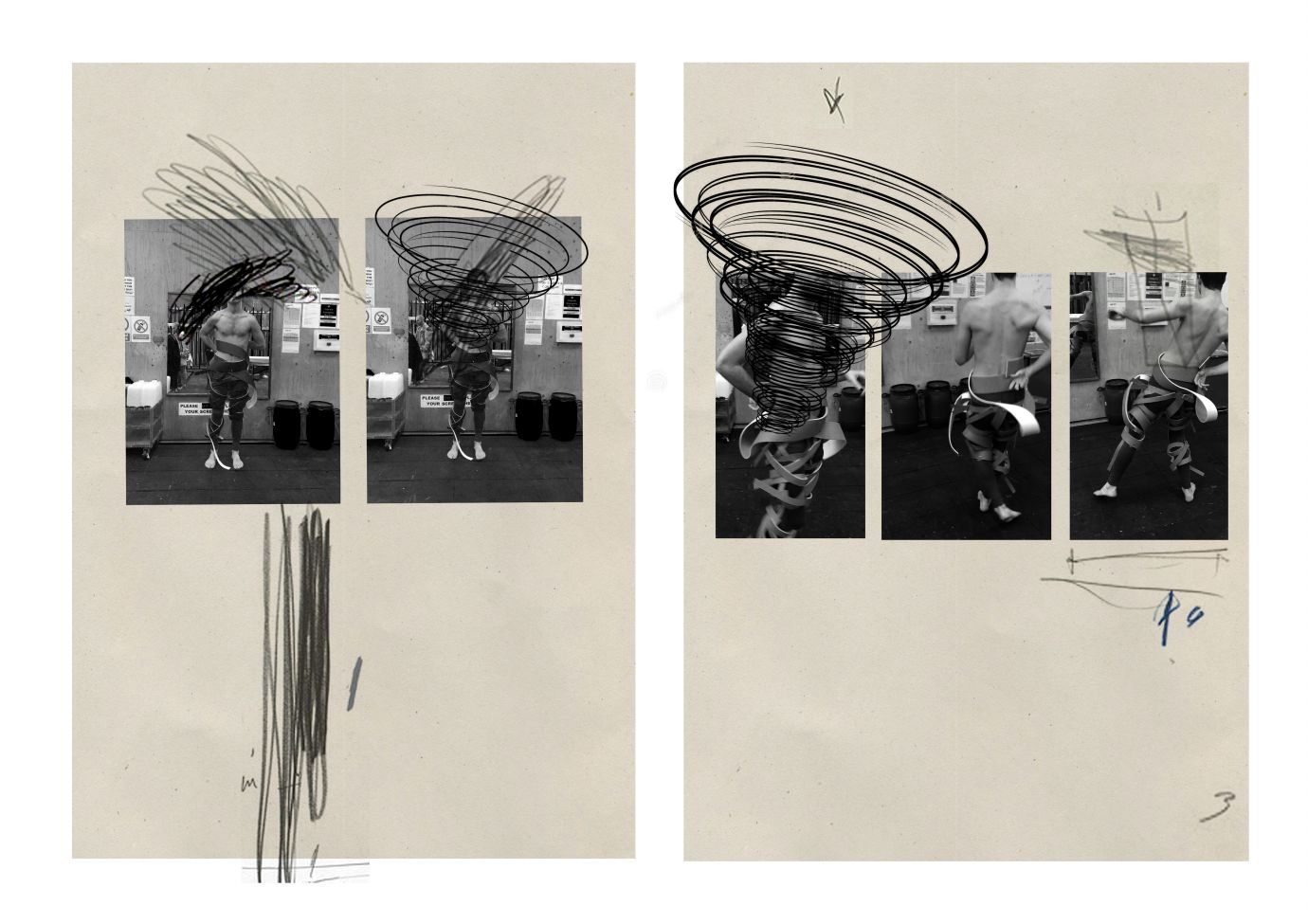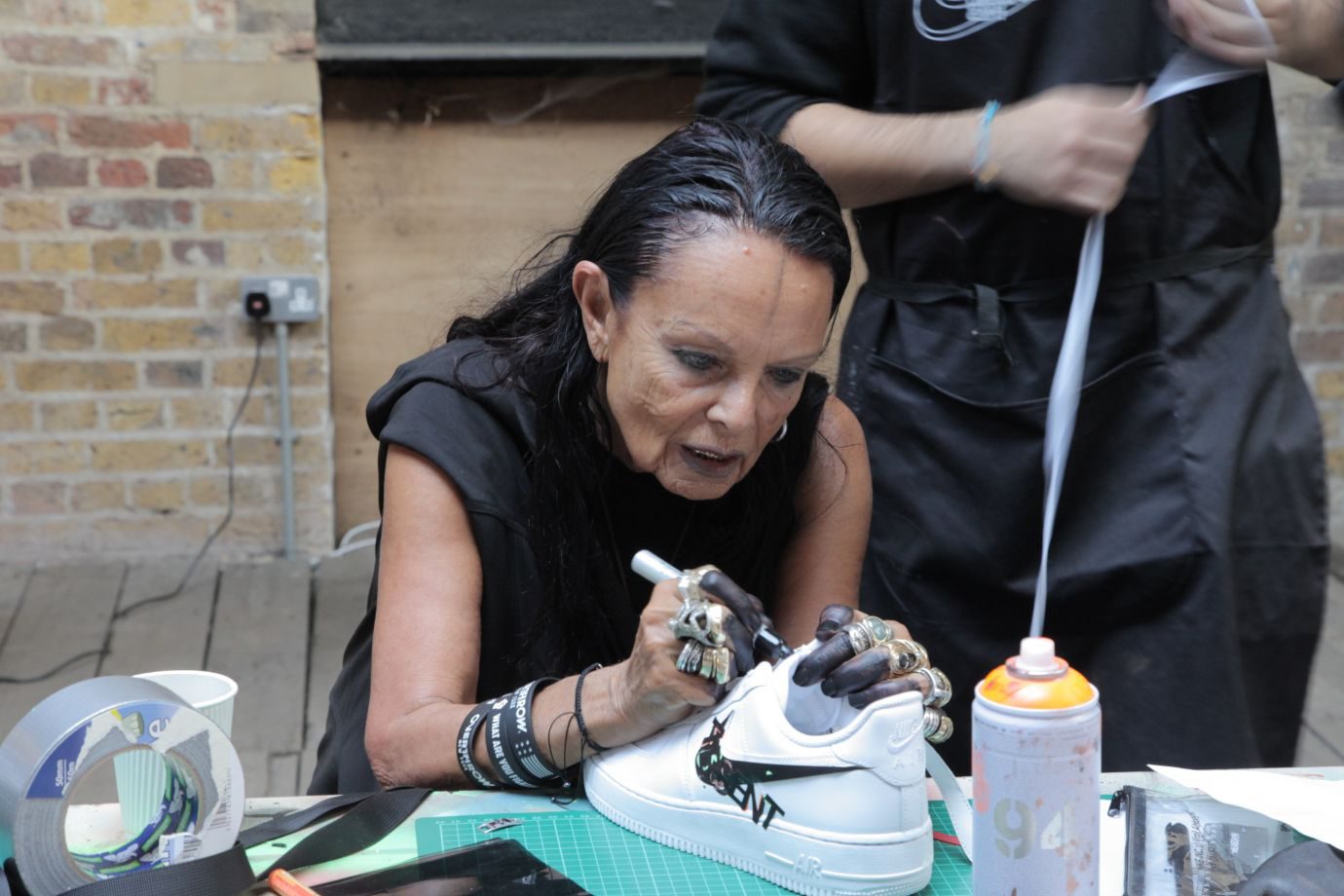Lara Johnson-Wheeler: My first question is something I’m sure you’re asked quite often. It’s about how you personally describe your role in the fashion industry currently.
Hiroshi Fujiwara: It’s difficult. I started DJing. I’ve always been interested in fashion and music. I was really inspired by punk rock. In ’77, when I was a teenager, there was always music and fashion together. Punk rock, psychedelic, or anything from British rock always comes with fashion and music culture. I was interested in both. So I started DJing, styling, and fashion design. That’s how I started. So I’m still doing music and fashion.
LJW: Let’s say you meet someone new at a party and they ask what you do, do you have an answer in that case?
HF: I don’t like to describe myself… I kind of like to be mysterious.
“Some people want to be famous, they want to be big, they want to be a president of a big company. (…) I don’t want to take a risk, I just want to keep myself small and then work globally. In this way you can go anywhere you like, whenever you want. You can work for yourself. ” – Hiroshi Fujiwara
LJW: I want to ask you next about Fragment Design. The brand has been prolific in working in partnership, and partnership is something that has really informed your career. What do you think being successful in partnership looks like?
HF: Everything I do is a partnership. Fragment is not a brand that makes anything. I used to own the brand Goodenough in the ’90s, and I stopped manufacturing anything from my office. I didn’t want to make my company big. If you start manufacturing, the company is growing. You have to hire people, you need money, you have to deal with a bank… that kind of thing. I decided that I wouldn’t do that. I kept my office small, only two or three employees. Still today, Fragment is just three of us. I found out that the best way is to do these collaborations, as everyone else does. My friends, like Undercover, Neighborhood, or even Bathing Ape, were already really successful in the ‘90s. So they were helping me out.
LJW: That idea, of trying to keep something small, keeping a brand intimate, making sure that you have a close group of people around you in order to move forward in a way that’s not about growing in size, but growing in ideas – do you think that that’s something you would advise young – not just designers but multifaceted creatives like yourself – to do?
HF: That’s just one idea. I don’t think it fits everyone. Some people want to be famous, they want to be big, they want to be a president of a big company. It depends on what you want to do. I don’t know who’s doing anything similar to me. I don’t want to take a risk, I just want to keep myself small and then work globally. In this way you can go anywhere you like, whenever you want. You can work for yourself.
“I can prove you don’t have to be a part of big companies. You can be independent.” – Hiroshi Fujiwara
LJW: It’s interesting that you think that you’re trying to keep your work presence small when the reality is that for most people in fashion you are a cult figure. You have managed to – whether you wanted to or not – create a following. And the general perception is that you are an incredibly successful creative. It’s interesting that the motivation for you to become that wasn’t there. How do you think young people can stick to their beliefs and not be swayed by the possibility of more money, fame, or success?
HF: I can prove you don’t have to be a part of big companies. You can be independent. I think I am proof of that. Maybe a young kid thinks I’m cool or really successful but I’ve been doing the same things for 30 years. By myself. I can go work with Moncler or any other company by myself. I go there, I spend time with them, and even do design, and come back… Everything I do is just by myself.
LJW: Do you think that’s about having confidence in your own beliefs and tastes?
HF: Yeah, but not only confidence – you can easily work [on this] with somebody else. I can’t do everything by myself. When you find good partners, you can enjoy working with somebody else, and you can share ideas. I’m not a designer… I’m not sure it’s a good word. I’m not a designer, meaning I don’t feel that I need to do this… I’m more like a creative.
LJW: So you’re able to be flexible?
HF: Yes, I am.
“That was our best invention of the ‘90s: street fashion. It’s like everyone became equal. From London, Paris, New York, LA… The same movement at the same time.” – Hiroshi Fujiwara
LJW: You are seen as one of the ‘godfathers’ of street fashion. How do you see this movement of streetwear getting more into the luxury market? What do you think about that?
HF: Some people maybe think the street fashion scene is dumb, as if it’s all about selling out, but I don’t think so. It’s necessary and they can’t stop it. I think it’s natural. I think it’s good. Maybe more big fashion Maisons could work with street brands.
LJW: I think a lot of people who are interested in your work are interested in what it means that the cult appeal of streetwear, particularly Japanese streetwear, is still perpetuated globally. What do you think it is about Japanese design – for Western and Euro-centric markets – that excites people so much, still?
HF: I never really think that way. You know, we are not from Japan. I am a part of the world of street fashion. It doesn’t matter who or where I come from. Some people say you have to be proud as an Asian or as a Japanese to be in this kind of position, but I never saw it that way. I’m always part of the same kind of group. That was our best invention of the ‘90s: street fashion. It’s like everyone became equal. From London, Paris, New York, LA… The same movement at the same time.
LJW: Do you think street fashion is more of a global equalizer in terms of style than other fashion movements?
HF: Yes, I think so. I think if it wasn’t for street fashion, maybe Paris would be the pinnacle of fashion. Before street fashion, everyone wanted to do a fashion show in Paris.
LJW: So the prêt-à-porter, traditional show schedule.
HF: Yeah. Or maybe London. Everyone wanted to be part of it. But street fashion changed that.
LJW: Let’s talk a little bit about Punk London. You mentioned it at the beginning of our conversation as something that had a major impact on you, musically and for your aesthetic as well. Do you think of punk and other subcultures as something that influences creatives today?
HF: I think maybe not at the moment, but I think hip-hop is a main influence.
LJW: Throughout your career, you’ve been seen as instrumental in sharing fashion references with designers and brands in a time before the internet was a big part of our lives. How have you adapted to sharing things that you see and like, through social media, particularly in the last year or so when we’ve been very confined to the online?
HF: I still look at punk things. I look at skateboarding, but I don’t skate anymore. But I still want to watch skateboarding. I think that has something to do with nostalgia. For me anyway.
LJW: So you kind of use the internet as a photo album to go back.
HF: Yeah.
“I’m not really a fashion designer who can create from nothing, create from scratch. I always use my memories and archives to do that.” – Hiroshi Fujiwara
LJW: That’s nice. That feels like a nice way to use the online. Lots of your collaborators talk about the fact that you are very good with timing, you have an innate sense of timing, as well as taste. How do you think you are able to keep your finger on the pulse or be aware of what’s going to be “cool” for people while you’re creating it?
HF: I have archives. What I’ve seen, what I’ve learned, what I’ve listened to. That’s all I’ve got. I’m not really a fashion designer who can create from nothing, create from scratch. I always use my memories and archives to do that.
LJW: I read a piece written about you and your work that said “Fujiwara’s taste level cannot be replicated, because, while others reference subcultures or specific areas, he lived them.” Do you think that one has to live with subcultures or through these eras in order to effectively make items – garments, fashion, music – that are inspired by them? For example, do you think that if I was to create something inspired by punk London, I would have had to have lived through it to make a successful piece that was inspired by that time?
HF: No, I don’t think so… you have your iPhone, you can research anything. You can Google anything you like now. It’s all about what kind of things you are interested in, what you want to learn.
LJW: I should ask about a comparison between your practice and that of Virgil Abloh. What are your thoughts on Virgil’s practice, and his approach to product at Louis Vuitton?
HF: I think he’s really clever. For me, I can’t make as much. Everything I make, I want to wear, I want to have, hence I can’t make that many things. He creates pieces that he doesn’t want to wear. Virgil is more like a designer, he can make people happier.
“I think a Creative Director can be a designer, and the designer can be a Creative Director. I think Virgil is kind of both.” – Hiroshi Fujiwara
LJW: You spoke about this idea before. That ‘a designer is no longer a designer’. How the people that are taking on the role are no longer really designing. In this conversation about Virgil, I think that’s interesting, as some people get very angry because they think that he’s not a designer.
HF: I think he is a designer. I think he’s a great designer.
LJW: People are interested in the shift towards being more of a Creative Director, as the leader of a brand is something that’s now more established. How do you feel about that? Is that something that has shifted your philosophy?
HF: I think a Creative Director can be a designer, and the designer can be a Creative Director. I think Virgil is kind of both.
LJW: Well… as we established in the first question of our interview, perhaps defining oneself in those sorts of restrictive roles isn’t something that interests you so much.
HF: For me, no.









